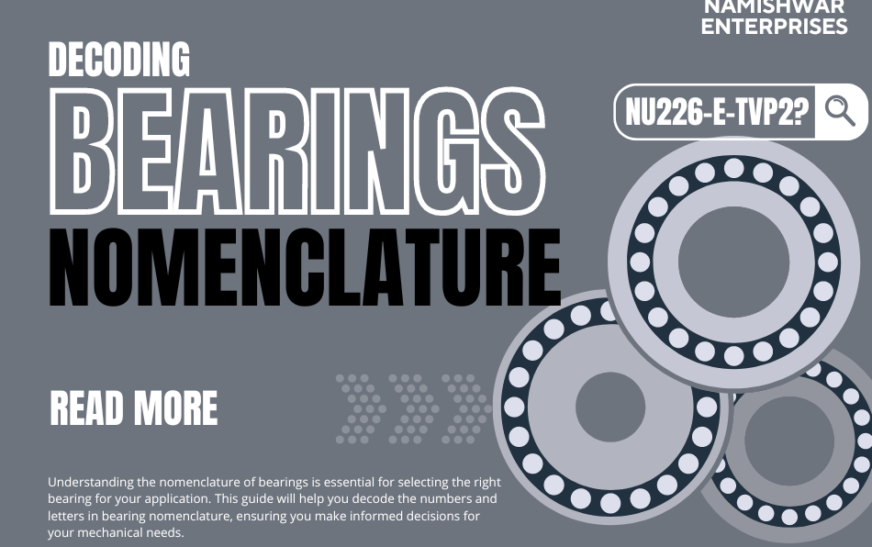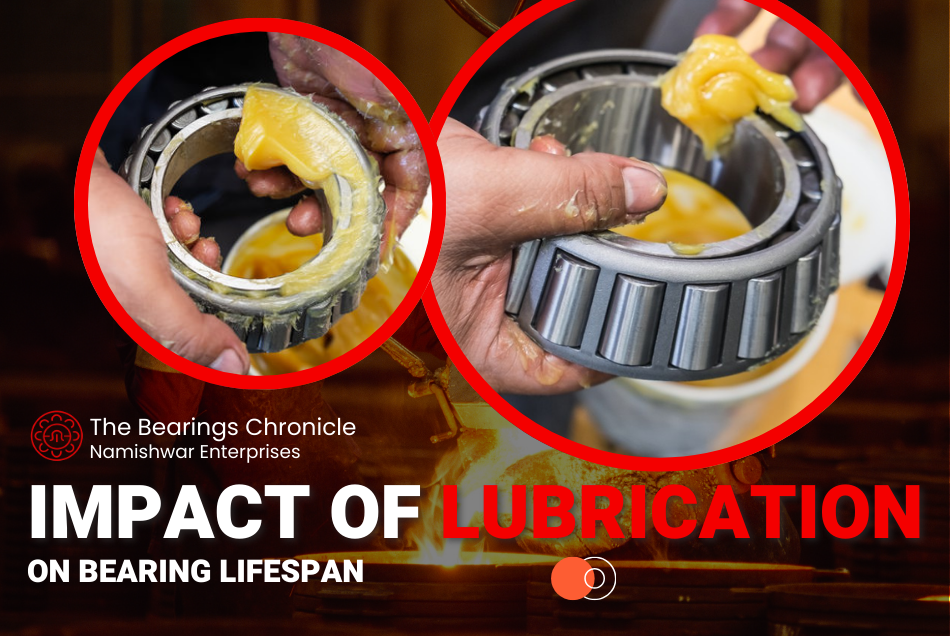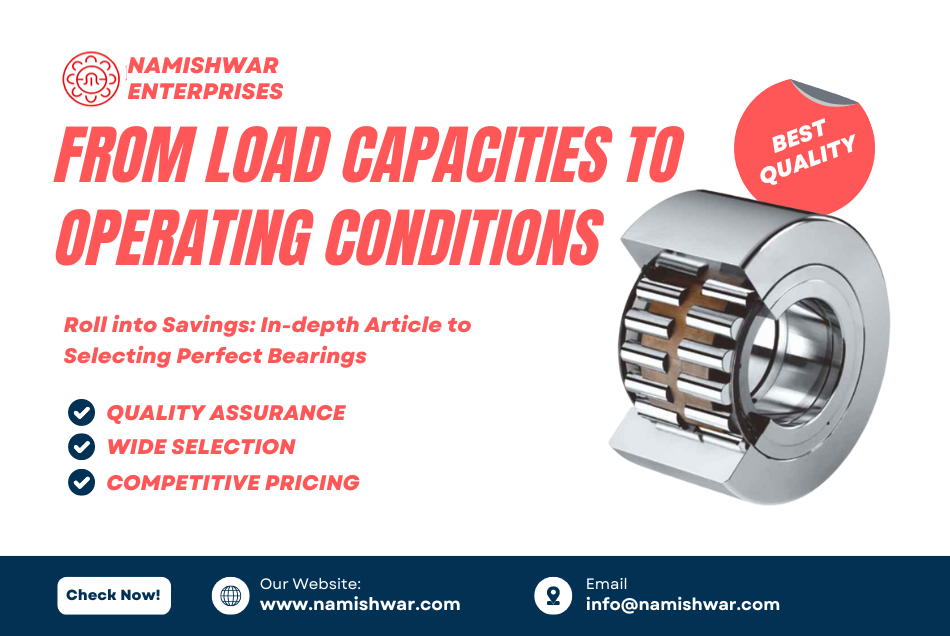Bearings play a crucial role in the smooth operation of machinery, reducing friction between moving parts and supporting loads. Understanding the nomenclature of bearings is essential for selecting the right bearing for your application. This guide will help you decode the numbers and letters in bearing nomenclature, ensuring you make informed decisions for your mechanical needs.
Understanding Bearing Nomenclature
Bearing nomenclature can seem complex, but each character in the code has a specific meaning. These codes provide valuable information about the bearing type, dimensions, tolerances, and other characteristics.
Basic Components of Bearing Codes
1. Bearing Type
The first part of a bearing code typically indicates the type of bearing. Common types include:
- Deep Groove Ball Bearings (6): Designated by the number 6.
- Angular Contact Ball Bearings (7): Designated by the number 7.
- Self-Aligning Ball Bearings (1): Designated by the number 1.
- Cylindrical Roller Bearings (N): Designated by the letter N.
- Tapered Roller Bearings (3): Designated by the number 3.
- Spherical Roller Bearings (2): Designated by the number 2.
For example, a bearing code starting with 6204 indicates a deep groove ball bearing (6).
2. Dimension Series
The dimension series is indicated by the second and third characters in the code and provides information about the bearing’s dimensional series and size. The dimension series includes:
- Width Series: Designated by the second character.
- Diameter Series: Designated by the third character.
For instance, in the bearing code 6204, the second character (2) indicates the width series, and the third character (0) indicates the diameter series.
3. Bore Size
The bore size is indicated by the last two digits of the code. It is the inner diameter of the bearing in millimeters. For bore sizes less than 20 mm, a specific number system is used:
- 00: 10 mm
- 01: 12 mm
- 02: 15 mm
- 03: 17 mm
For bore sizes 20 mm and above, the number is directly the bore diameter in millimeters. For example, a bearing with a code of 6204 has a bore size of 20 mm.
Suffixes and Prefixes in Bearing Codes
Bearing codes often include suffixes and prefixes that provide additional information about the bearing’s design, materials, and special features.
Common Suffixes
- C2, C3, C4, C5: Radial internal clearance, with C3 indicating greater clearance than normal.
- P2, P4, P5, P6: Accuracy classes, with P2 being the highest precision.
- E: Enhanced capacity design.
- M: Machined brass cage.
- N: Snap ring groove on the outer ring.
- RS, 2RS: Seals on one or both sides.
- ZZ, 2Z: Shielded on one or both sides.
For example, a bearing with the code 6204-C3 indicates a deep groove ball bearing with a bore size of 20 mm and greater than normal radial internal clearance.
Common Prefixes
- R: Special internal design.
- W: Stainless steel material.
- K: Tapered bore.
A bearing with the code R6204 is a deep groove ball bearing with a special internal design.
Detailed Breakdown of Bearing Codes
Example 1: 6205-ZZ
- 6: Deep Groove Ball Bearing
- 2: Width Series
- 0: Diameter Series
- 05: Bore Size (25 mm)
- ZZ: Shielded on both sides
Example 2: 7310-BE
- 7: Angular Contact Ball Bearing
- 3: Width Series
- 1: Diameter Series
- 0: Bore Size (50 mm)
- BE: High-capacity design with machined brass cage
Example 3: NU2206-E-TVP2
- N: Cylindrical Roller Bearing
- U: Outer ring with two ribs, inner ring without ribs
- 2206: Dimension Series and Bore Size (30 mm)
- E: Enhanced capacity design
- TVP2: Polyamide cage guided by rollers
Choosing the Right Bearing for Your Application
Selecting the appropriate bearing involves understanding the application’s requirements and matching them with the bearing’s specifications. Key considerations include:
Load and Speed Requirements
Different bearings are designed to handle varying loads and speeds. For high-speed applications, deep groove ball bearings or angular contact ball bearings are often preferred. For heavy loads, cylindrical roller bearings or spherical roller bearings may be more suitable.
Environmental Conditions
Bearings may need to withstand specific environmental conditions such as temperature, moisture, and exposure to chemicals. Stainless steel bearings (indicated by the prefix W) offer corrosion resistance, while bearings with seals or shields (RS, 2RS, ZZ, 2Z) provide protection against contaminants.
Precision and Clearance
The precision and internal clearance of bearings are critical for applications requiring high accuracy and smooth operation. Bearings with higher precision ratings (P2, P4, P5, P6) are used in applications such as machine tools and robotics. Bearings with specific internal clearances (C2, C3, C4, C5) are chosen based on the operating conditions and assembly fits.
Lubrication and Maintenance
Proper lubrication is essential for bearing longevity and performance. Bearings can come pre-lubricated or may require periodic lubrication. Sealed bearings (RS, 2RS) are typically maintenance-free, while open bearings may need regular lubrication.
Conclusion
Decoding bearing nomenclature is a crucial skill for anyone involved in machinery maintenance and design. By understanding the meaning behind the numbers and letters, you can ensure that you select the right bearing for your specific needs, enhancing the performance and reliability of your equipment.










